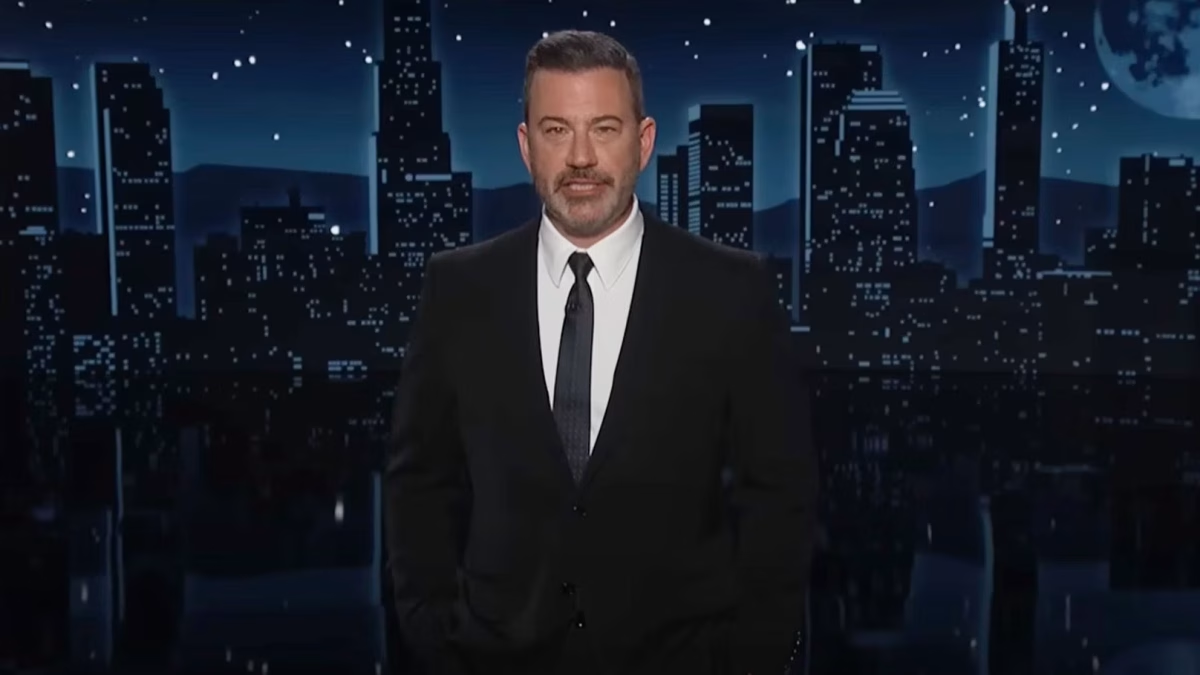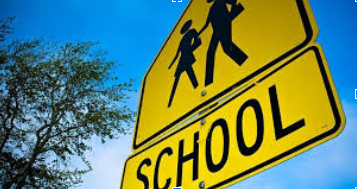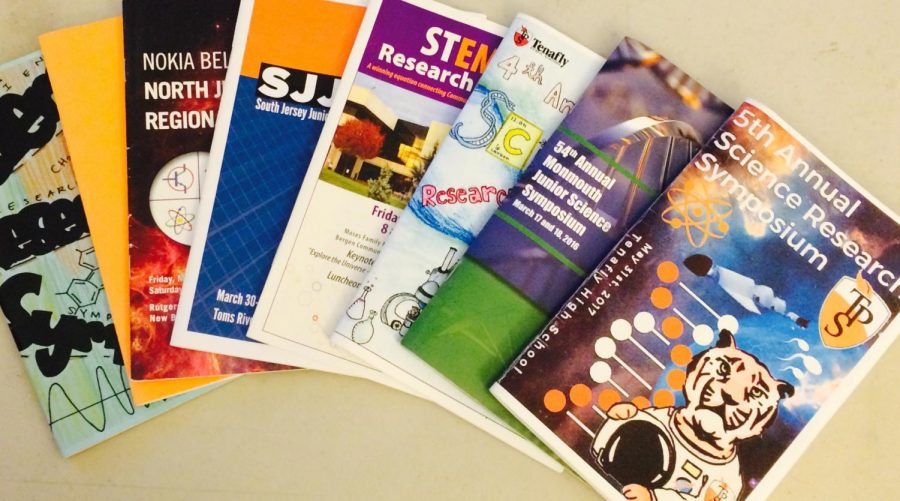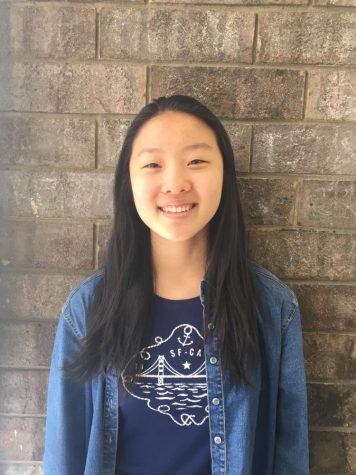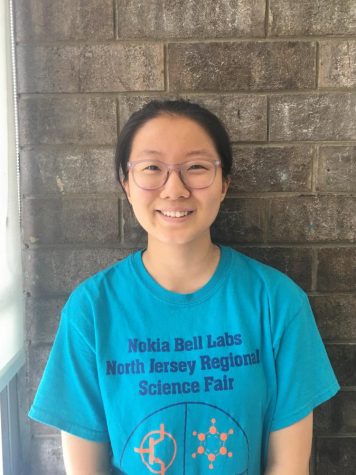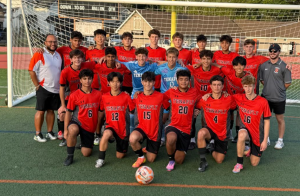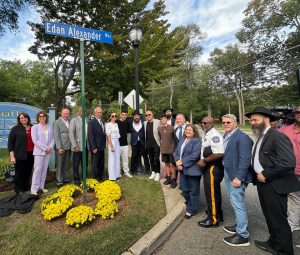Catching up with the Science Research Program
January 3, 2018
While most students spend a majority of their school breaks relaxing at the beach, travelling, or taking the time to do absolutely nothing to recharge, a few select students find themselves engineering robotic fish, researching the memory of movement, studying mast cells, exploring nanoscience, and more at university laboratories and research institutions. When these student scientists return to school, they prepare to present their research at school, symposiums, and competitions.
The school’s Science Research Honors Program is a three-year program—part of the University in the High School Science Research Program at the University of Albany (SUNY)—that begins in a student’s sophomore year and that teaches students the methods of science research, how to seek professional researchers in their fields, and how to conduct original research under professional mentorship. In this program, students start their research with a literature search to determine a topic to study, which can range from electrical engineering to immunology. Then they reach out to scientists in the area to obtain internships at their labs over the summer. Some institutions that students have interned at include Mount Sinai Hospital, Memorial Sloan Kettering Cancer Center, Weill Cornell Medical College, and Rutgers New Jersey Medical School.
In their internships, science research students conduct a wide array of research projects at post-secondary school level. For instance, Nicholas Cohen (‘18), while interning at the Rutgers New Jersey Medical School in Newark, has and continues to explore the complex relationship between the human gut and the brain. “We often think that the brain is a separate organ, but its role is still pretty unknown in terms of human neurological development elsewhere in the body. New research has suggested that the intestines have the most neurons outside of the brain in the body,” said Cohen. For Noah Vardy (‘18), the research experience has strengthened his interests for specific scientific fields. “My involvement in the science research program has really helped me focus my interest in specific areas of science, particularly physics and astronomy,” said Vardy, who has also participated in statistics and coding-based research projects under the guidance of a mentor from Columbia University.
Additionally, many of the projects conducted by these students have real-world implications. “Over the summer, I did research on T-cells, which are one of the main types of immune cells,” said Lauren Kim (‘18). She has interned at the Center for Immunity and Inflammation at Rutgers New Jersey Medical School for the past two summers, experimenting primarily with immune cells in mice models. “A PhD candidate at my lab was doing research on another type of immune cell called basophils, and his project was about seeing the difference in cytokine production between regular basophils and genetically-modified basophils. It was found that inhibiting a proprietary gene, Enzyme A, in basophils prevented them from producing IL-4, which is an agent that causes inflammation. So when looking at the gene profiles of T-cells, I found that these cells also highly express Enzyme A. So, I wanted to see if removing Enzyme A in T-cells would have any effect on their IL-4 production as it did in basophils.” After conducting her project, Kim discovered that much like the basophils, the T-cells were not able to produce IL-4. “The interesting thing, though,” said Kim, “was that removing the gene only affected IL-4 production, not any of the other cytokines found in the mice. This suggests that Enzyme A would be an excellent drug target for people suffering from allergic diseases like asthma.”
The program teachers are crucial in guiding the students along the way each year and preparing them for competitions and presentations. There are three teachers that lead the program: Helen Coyle, physics teacher; Anat Firnberg, chemistry teacher; and Grace Woleslagle, chemistry teacher.
“It has been very rewarding for me as a teacher to guide my students through their science research journeys for the past six years,” said Coyle. “The research course provides unique experiential learning which, for most students, occurs in college. The benefits of the course are evident and confirmed by science research alumni who have given me feedback over the years as to the opportunities that opened for them in their college careers and beyond.”
Woleslagle said, “I feel that the success of this program comes from the students and from their own determination and self-motivation. My role is to help them along the way and give them perspective and support.”
“A big part of being a teacher in this program is teaching students the methods of scientific research, starting with using scientific databases to find peer-reviewed articles and learning how to present these articles and original research with PowerPoint slides and posters,” said Firnberg. “As a teacher, I guide high school students to read and analyze peer-reviewed articles in order to present them to their peers. Another important job is to encourage students to build their confidence as presenters, as public speaking is extremely important when presenting research to peers and judges at competitions. I also help students find places to intern at over the summer. Helping these students to build their confidence to ask questions, interact, and work side by side with professionals and scientists in the field is very valuable. And all of this, ultimately, works to simply excite students about science through exposure to scientific literature and experiences.”
In the five years of the program’s existence, students have done well in science symposiums and competitions. Students have taken home awards from prestigious competitions including the Northern Jersey Regional Science Fair (NJRSF), the Junior Science and Humanities Symposium (JSHS), the Regeneron Science Talent Search (STS), and the Siemens Competition. This year, Kaitlyn Yeh (‘19) and Isabelle Kang (‘19) have been selected as Siemens Competitions semifinalists for their joint project “Generation and Characterization of Scaffolded Nanocomposites Coated with Aminosilane-stabilized Metal-core Nanoparticles,” a significant honor from a nationwide competition.
“Nanotechnology can be implemented in a wide range of applications such as drug delivery systems and pollution control. For our project, we synthesized nanoparticles in the lab using professional laboratory equipments to better understand this aspect of the field,” said Yeh and Kang, who conducted their project at William Paterson University last summer. “[The award] was an unexpected surprise, but we are grateful for the opportunity to represent research at THS in this way.”
At this time, most students are preparing to submit their projects to these competitions, all of which are held in early 2018. “With all the data I collected over the summer, I prepared a paper to submit to JSHS that will be held at Ocean County College,” said Kim. “I’m also beginning to create a poster to present at NJRSF, which will be held at Rutgers University.”
One competition that the program offers particularly to first-year science research students is the Urban Barcode Project (UBP), a research program that gives high school students the opportunity to use DNA technology to explore biodiversity in their communities. Lauren Aslami (‘20) and Sabrina Li (‘20) are currently working together on their first research project, which will be submitted to the UBP competition.
“Our project is about the biodiversity of invasive and native plant species in the Tenafly Nature Center,” said Li. “I’m both excited and nervous because I’ve never done anything like this before. But I’m mostly excited because the topic is interesting and there’s still a lot more to do before our project is completed.”
When asked why she applied to the program, Aslami said, “I thought the program would be really interesting for me. I’ve always had an interest in the sciences and I wanted to see what experiencing science instead of sitting in a classroom and learning about it would be like. I think it’d be cool to work at a research lab outside of school.”
With all of the exciting activities and discoveries happening in the program and beyond, these student scientists have much to look forward to in the new year.





























































